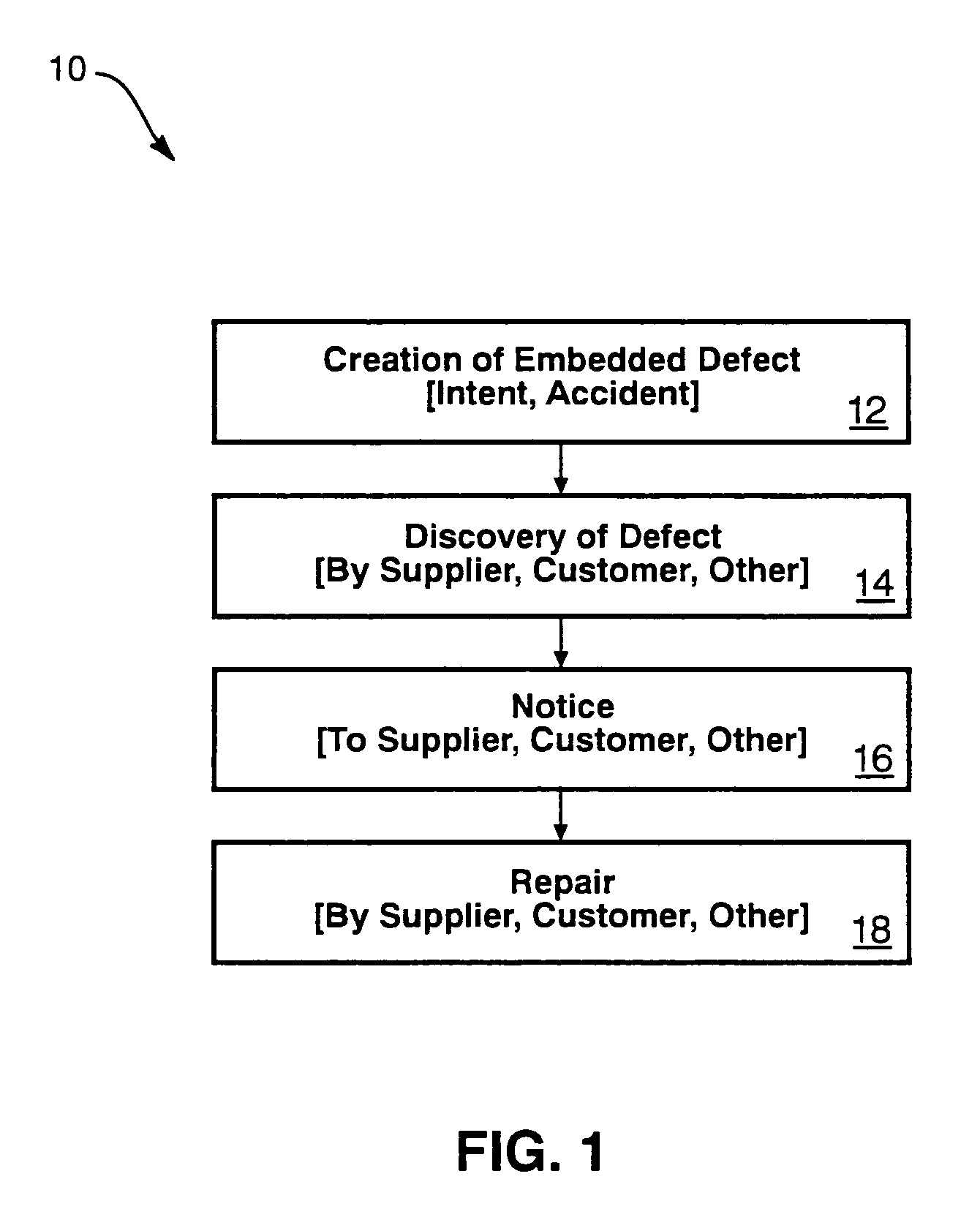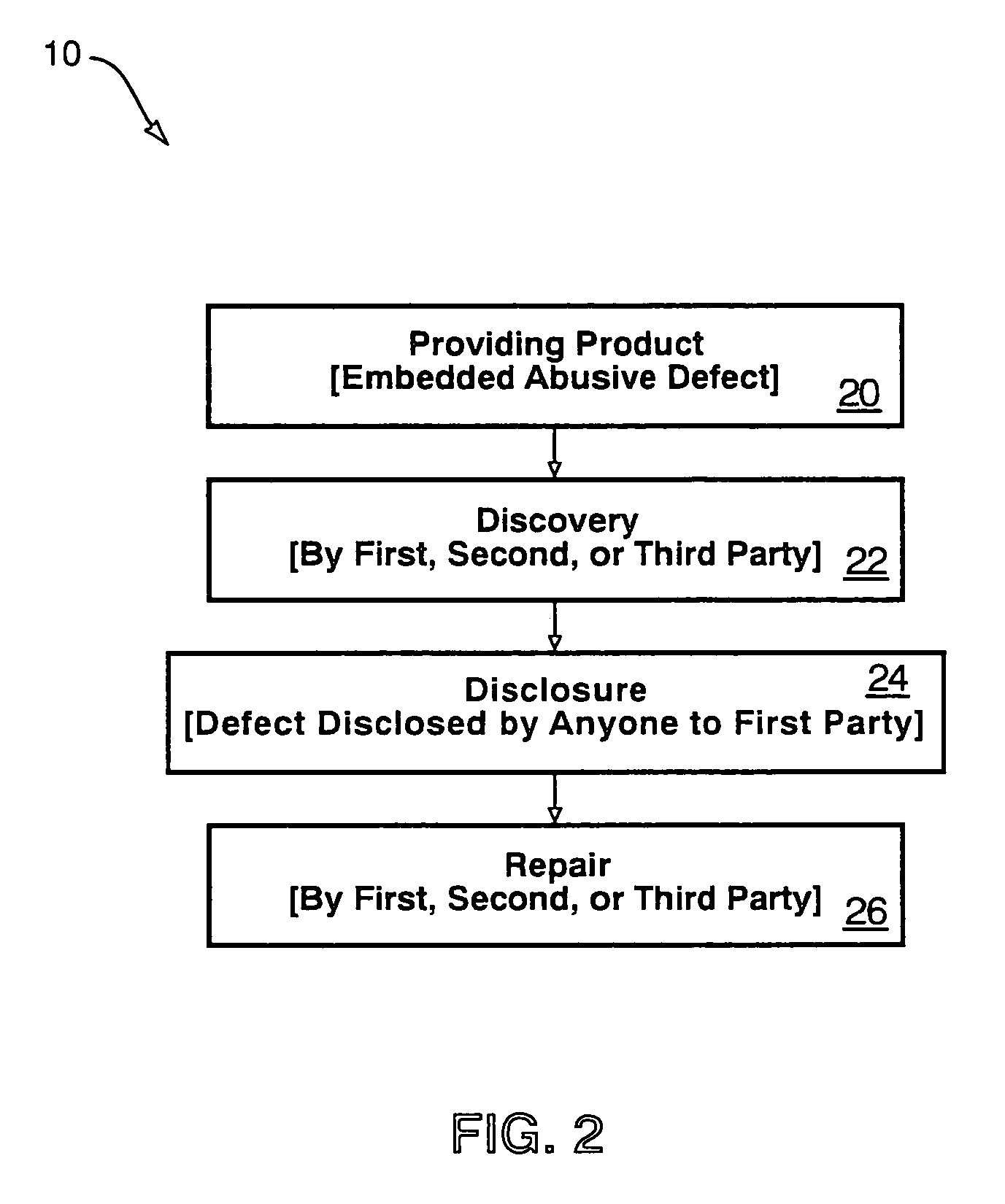Hardware is often likewise premature, and more difficult to correct.
Alternatively, beta testing may be inadequate, leaving various problems extant within either hardware, software, or a combination thereof.
For example, occasionally, problems are comparatively esoteric, and may occur only in a few rare conditions or instances.
Nevertheless, some errors occur with sufficient regularity as to seriously encumber users unaware of the existence of such product flaws.
In recent years, computer and software manufacturers have been repeatedly surprised, even amazed, at the groundswell of opposition to products that are not adequately tested, supported, corrected, recalled, or otherwise identified as having correctable flaws.
Software, in particular, has arrived at a new threshold of pain for purchasers and users.
Never since the advent of government agencies for
consumer protection against fraud, product failure, product inadequacy, manufacturer non-responsiveness, and the like, have so many dollars of
product value been subject to such massive amounts of owner and operator time in order to obtain the purported benefits of the products.
Historically, a manufacturer or other purveyor of a computer-related product may face a dilemma with respect to certain product flaws.
To the extent that an error, built into or programmed into a computer-related product, is comparatively esoteric and unlikely to cause problems for the majority of users, a manufacturer or developer may prefer to ignore it.
Similarly, to the extent that a problem is likely to cause a comparatively small disruption of promised service, a manufacturer may choose to ignore it.
Alternatively, to the extent that a problem is likely to cause serious economic damages to a commercial or industrial user of a software product or physical damage to persons or property as a direct result of the failure of a computer-based product, a manufacturer will take appropriate steps to find a correction to the problem, announce the presence of the flaw and the availability of a corrective measure, and seek to bring all copies of the product into compliance with a corrected version thereof.
Motivation may arise from personal interest, individual or enterprise-wide
frustration, desirability of a result, previous experiences and expectations, and the like.
In current process for product improvement, little incentive exists to provide for skilled third parties to improve
marketed products.
By the same token, manufacturers, whether large or small, may have limited motivation, resources, or the like to locate and correct errors.
Other difficulties with software originate from purveyors and producers of “invasive software”.
The proliferation of cookies has become epidemic.
Moreover, such software installation done extraneously to the basic software installation may even be as aggressive as moles that execute searching functions to determine information on the user's computer in order to report that information back to the software installer, vendor, or producer.
Moreover, many professional organizations such as corporations, government bodies, government regulatory agencies, administrative agencies, educational organizations,
health maintenance organizations, medical practices, insurance companies, financial institutions, law offices, and the like, maintain, as a matter of course, extremely sensitive, proprietary, and confidential information.
Such installations may be imposed over
the Internet, or from installation software initially, and the confidential information of clients and customers may thus be compromised.
Meanwhile, the software originally installed, which may have given rise to the subsequent or concurrent installation of spurious invasive software, has breached and caused the software user to breach duties to clients and customers.
However,
program code written for newer architectures may not run on the older processors, since new instructions may be utilized.
These new instructions, if encountered by an older processor, may incur errors in the operation thereof, and may cause a
system shutdown or the like.
Some processors may not support this instruction and incur errors when encountered thereby.
If these minimum
system requirements are not met, the installation program may abort the installation process and prevent a user from installing the desired software.
Unfortunately, some requirements may be artificially imposed.
That is, a program may actually run at a satisfactory performance level, as deemed by a user of a computer system, but the user may be prevented from installing and running the software because the manufacturer has artificially locked out selected computer systems.
This may require a user to unnecessarily
upgrade or purchase a new computer system, satisfying the requirements, incurring unneeded
frustration, effort, collateral
programming, and expense to the user.
 Login to View More
Login to View More  Login to View More
Login to View More 


